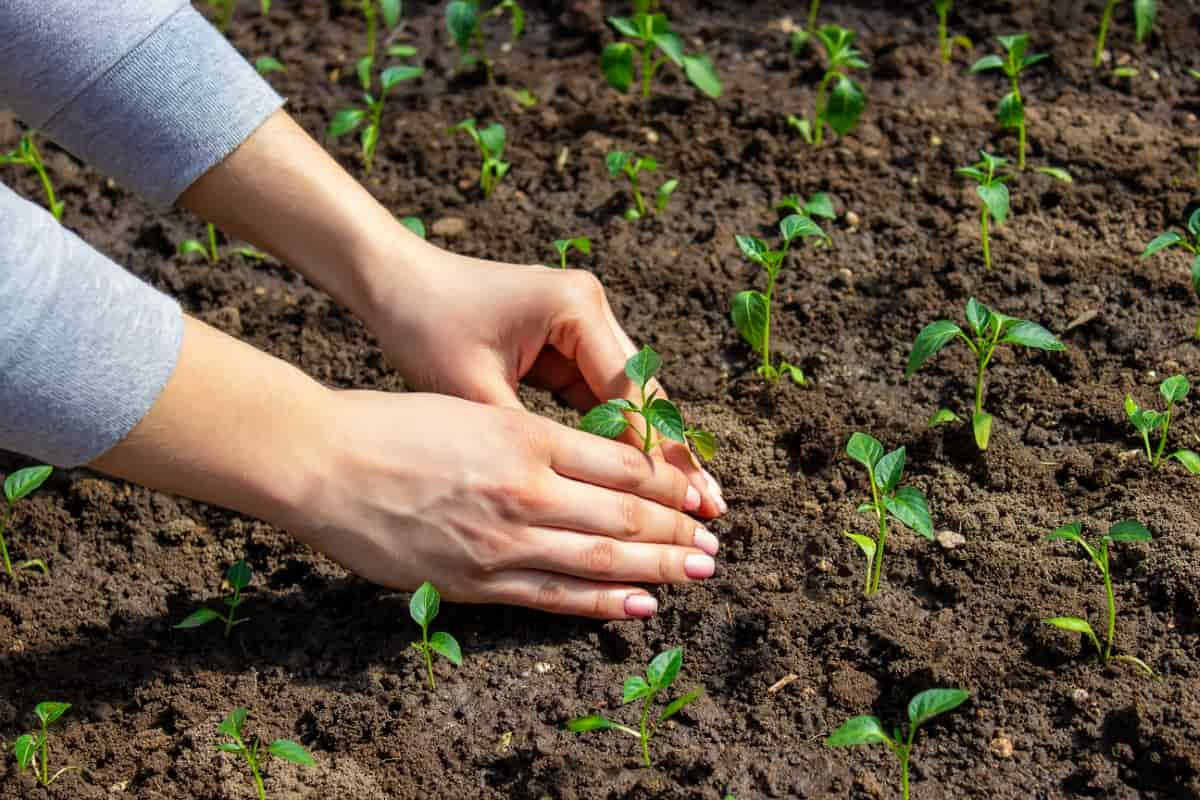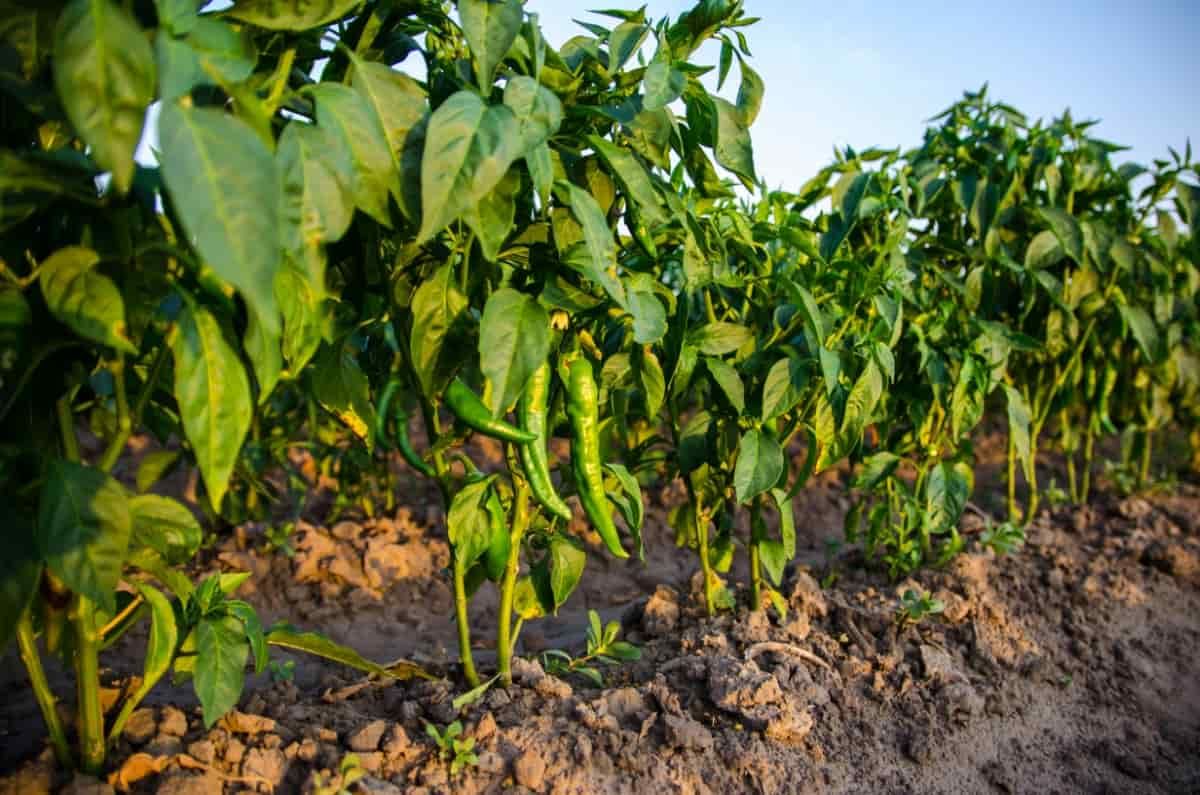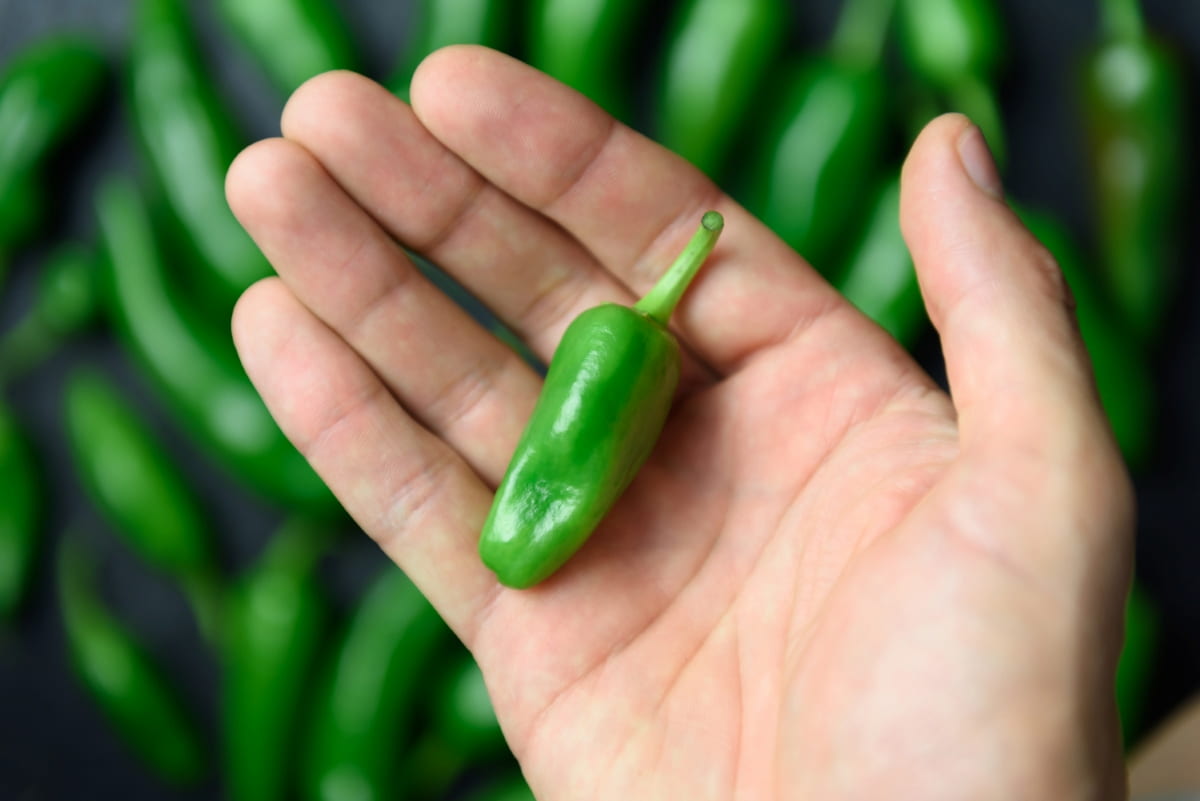In Texas, gardening often extends beyond the hobby realm to a way of life. The vast landscapes and varied climates offer an ideal environment for growing numerous crops, peppers being among the most popular. When to plant peppers in Texas, be it bell peppers in north Texas or jalapeño peppers, is a common question every gardener asks.

Growing bell peppers in Central Texas has unique challenges, just as when considering growing bell peppers in pots. Furthermore, for those curious about when to plant serrano peppers in Texas, there are specific timelines to follow. Dive into this detailed guide and discover the secrets of pepper farming in the Lone Star State.
Understanding the Climate and Soil Requirements for Growing Peppers in Texas
Texas boasts a diverse climate, ranging from humid subtropical in the east to semi-arid in the west. This variety provides a range of growing conditions suitable for various pepper plants. Peppers thrive best in well-draining soil with a slightly acidic pH level, ideally between 6.0 and 6.8.
Since the state encompasses multiple USDA hardiness zones, from Zone 6 in the Panhandle to Zone 9 in the southern parts, the temperature and weather conditions are crucial in determining the success of pepper cultivation. Ample sunlight, temperatures between 70-90°F, and consistent moisture are vital ingredients to foster robust pepper growth.
Selecting the Right Pepper Varieties for Texas Growing Conditions
Texas, being vast, accommodates a plethora of pepper varieties. From the mild bell peppers to fiery hot chilies, there’s a perfect fit for every Texan’s palate. While bell peppers, with their sweet undertones, thrive in areas with slightly cooler evenings, hot peppers such as jalapeños, banana peppers, and serrano peppers are more resilient to Texas’s hotter regions. Choosing varieties best suited for your specific location is essential, considering factors like humidity, temperature range, and local pests.
Preparing the Soil and Providing Adequate Drainage for Pepper Plants
To ensure optimal growth, the soil must be nutrient-rich and well-draining. Before planting, gardeners should work with organic matter like compost or aged manure to enrich the soil and enhance its texture. Elevated beds are beneficial, particularly in areas with clay or dense soil, as they enhance water drainage and prevent roots from being in stagnant water. If you’re growing bell peppers in pots, ensure the containers have sufficient drainage holes and use a well-draining potting mix. Regular soil tests can also guide gardeners on the right fertilization strategies.
Determining the Ideal Planting Time for Bell Peppers in Texas
When to plant bell peppers in North Texas is a frequent query among garden enthusiasts. Bell peppers are best planted after the last expected frost, typically around late March to early April in North Texas. Begin indoor cultivation of seedlings 8-10 weeks prior to the intended transplanting day. These plants prefer soil temperatures between 70-85°F, making it essential to keep an eye on the weather and use techniques like black plastic mulching or row covers to warm the soil if required.
In case you missed it: How to Start Rice Farming in Texas: A Step-By-Step Production Guide for Planting to Harvest

Timing Considerations for Planting Hot Peppers in Texas
The planting window for hot peppers, including when to plant serrano peppers in Texas, generally aligns with bell peppers. However, they often require a slightly longer growing season. Initiating the planting process in late March to early April gives them ample time to mature before the heat of midsummer kicks in. Gardeners should remember that hot peppers, particularly varieties like serranos and jalapeños, may tolerate warmer conditions and extended growing seasons better than their sweeter counterparts.
In case you missed it: Best Heirloom Tomatoes for Texas: Early-maturing, Disease-Resistant Varieties

Best Practices for Planting Banana Peppers in Texas
Banana peppers, with their mild heat and unique flavor, are a favorite for many Texas gardeners. Like other peppers, they appreciate warm soil and temperatures between 70-85°F for germination. Planting should occur post the last expected frost, generally mirroring the timing for the bell and hot peppers. Providing ample space between plants, approximately 18-24 inches, ensures that these sun-loving crops get enough light and air circulation, fostering healthier growth and reducing susceptibility to diseases.
Guidelines for Growing Jalapeños in the Texas Climate
Jalapeños, a staple in Tex-Mex cuisine, are renowned for their spiciness and versatility. When considering when to plant jalapeño peppers in Texas, aim for late March to early April after the frost danger has passed. These peppers enjoy a slightly longer growing season, benefiting from Texas’s extended warmth. Jalapeños are relatively hardy, tolerating fluctuations better than some other varieties. However, consistent watering prevents issues like blossom end rot, especially during fruiting.
In case you missed it: Easiest and Best Fruit Trees to Grow in Texas: A Fruit Planting Guide for Texas Climate

Mulching Your Pepper Plants in Texas
Mulch is pivotal in Texas gardening, particularly during the scorching summer months. Organic mulches like straw, shredded leaves, or grass clippings help maintain soil moisture, regulate temperature, and suppress weeds. Applying a 2-3 inch layer around the base of pepper plants can drastically reduce water evaporation, keeping the soil cooler and ensuring that plants have a consistent water supply. Mulching also reduces soil-borne diseases by preventing water splashback onto the plants.
Providing Sufficient Water and Nutrients to Pepper Plants in Texas
Peppers generally require a consistent and moderate moisture level. Excess watering causes root rot, while too little water stresses the plant, leading to problems like blossom-end rot and limited growth. Using a drip system or soaker hose maintains even soil moisture without wetting leaves. Peppers don’t need much food, but a balanced fertilizer during planting helps. Applying compost or organic fertilizer as a side dressing during flowering enhances production.
Managing Pests and Diseases Common to Pepper Plants in Texas
Aphids, cutworms, spider mites, and pepper weevils are common culprits that can harm plants. Regularly inspecting plants, especially under the leaves, can help in early detection. Organic control methods such as neem oil, insecticidal soaps, or introducing beneficial insects like ladybugs can effectively manage these pests.
On the disease front, peppers can fall prey to issues like bacterial spots, fusarium wilt, and tobacco mosaic virus. To tackle these issues, make sure plants are spaced well for enough air flow, rotate crops, and refrain from gardening when plants are damp. Proactively and vigilantly, Texas gardeners can mitigate most pests and diseases, ensuring a healthy pepper crop.
Harvesting and Storing Peppers Grown in Texas
In Texas, the harvest timing largely depends on the pepper variety and personal preference regarding maturity and heat levels. Generally, peppers are ready for harvest when they reach the desired size and color. For a milder flavor, harvesting them when green is common, but allowing them to ripen further can intensify their heat and sweetness.
Using sharp scissors or pruners and cutting the pepper off with a bit of stem reduces the plant’s risk of damage. Post-harvest, peppers can be stored fresh in the refrigerator for up to two weeks. Methods like freezing, drying, or canning come in handy for longer storage. Thoroughly rinsing, drying, and storing them in airtight containers or freezer bags can preserve their freshness and flavor for months, allowing Texans to enjoy their homegrown peppers throughout the year.
Conclusion
Growing peppers in Texas requires understanding local climate nuances, selecting suitable varieties, and adhering to best practices.
- Feed Your Flock for Less: Top 10 Tips to Save on Chicken Feed
- Ultimate Guide to Ossabaw Island Hog: Breeding, Raising, Diet, and Care
- Hatching Answers: The Top 10 Reasons Your Chickens Aren’t Laying Eggs
- Eggs and Economics: Breaking Down the Cost of Raising Backyard Chickens
- Defend Your Greens: Proven Methods to Keep Iguanas Out of Your Garden
- Ultimate Guide to Cinnamon Queen Chicken: A Comprehensive Guide for Beginners
- Ultimate Guide to California Tan Chicken: Breeding, Raising, Diet, Egg-Production and Care
- Ultimate Guide to Marsh Daisy Chicken: Breeding, Raising, Diet, and Care
- 10 Types of Chicken Farming Businesses You Can Start for Profits